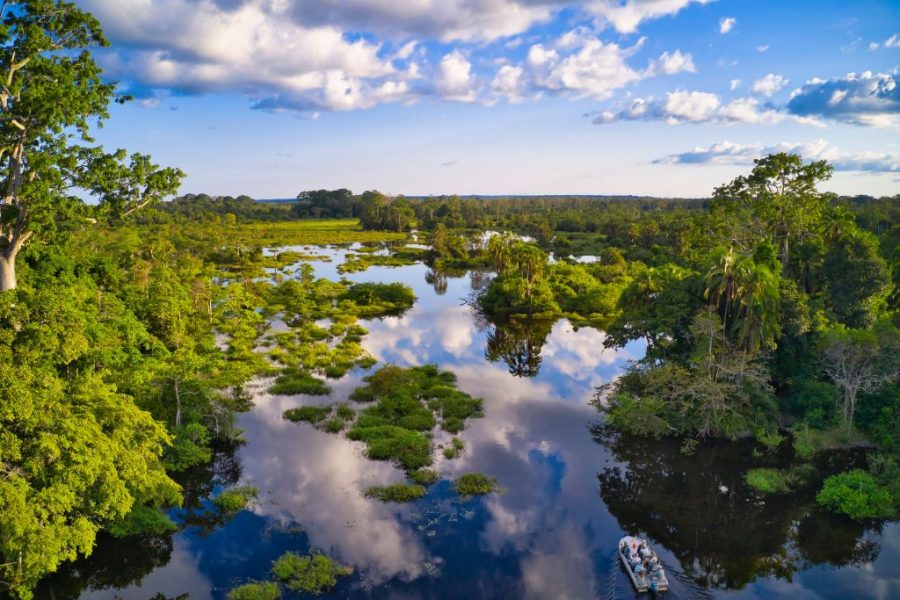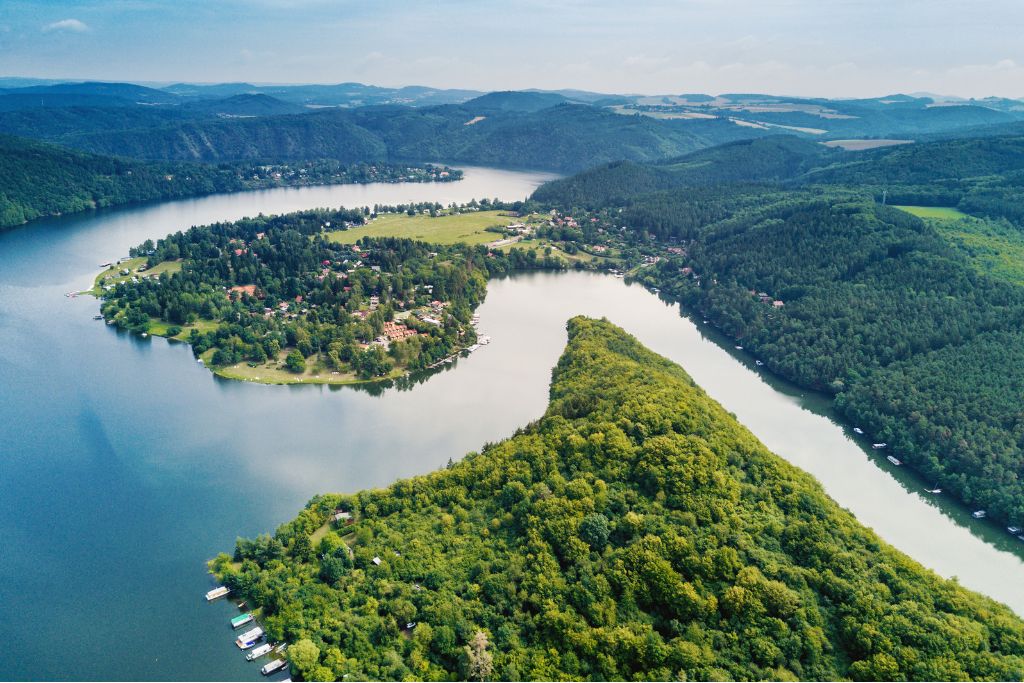
Welcome to the new A to Z Eco-Explorer, a series where we explore one environmental subject corresponding to each letter of the alphabet. In today’s article, we take a look at the Congo Basin. Home to a breathtaking expanse of biodiversity, the Congo Basin stretches across six different nations: Cameroon, the Central African Republic, the Democratic Republic of Congo, the Republic of Congo, Equatorial Guinea and Gabon. It is the second-largest tropical rainforest worldwide, second only to the Amazon. Read on to learn more about this vibrant and lush landscape.
—
The Congo Basin, also known as the lungs of Africa, is vital to the health of our planet. Its dense vegetation acts as a massive carbon sink, absorbing and storing vast amounts of carbon dioxide. In turn, this helps to regulate Earth’s climate by significantly reducing the amount of carbon dioxide in the atmosphere that contributes to global warming and climate change.
Did you know the Congo Basin is the world’s largest forest-based carbon sink? It contains the most intact forests, which can store more carbon emissions than the world’s largest tropical rainforest – the Amazon.
The Congo Basin is home to unparalleled biodiversity, with more than 400 species of mammals, 1,000 species of birds and 700 species of fish. However, some of these populations are already listed as endangered. For instance, four endangered African great ape species reside in the dense forests of the Congo Basin. These are the bonobos, chimpanzees, eastern gorillas (which include the mountain gorillas and the Grauer’s gorillas), and western gorillas (which include the western lowland gorillas and the cross river gorillas).

Eastern gorillas are endemic to the tropical rainforests of eastern Democratic Republic of Congo (DRC).
Apart from these beautiful primates, other endangered species include the giraffe-looking okapis, the Congo grey parrot and the critically endangered African forest elephants. Sadly, these animals face various threats, such as illegal poaching for bushmeat or ivory and habitat loss caused by deforestation and mining.
Check this out next: 5 of the Most Endangered Animals in the World
The Congo rainforest is not just a haven for wildlife; it is also home to 10,000 species of tropical plants, including a prized collection of medicinal plants. These plants can help treat diseases afflicting millions worldwide. For example, the root of African ginger can help treat cough, infection, and malaria. Similarly, the seeds of an African shrub called Griffonia can help cure stomach-related problems, and the seeds of another shrub called the Climbing oleander can treat heart problems like irregular heartbeat. However, plant species like the critically endangered African ginger call for urgent action as they are over-harvested for their healing property.
Did you know the Congo River is the second-longest river in Africa after the Nile? It is almost 4,700km long and offers fresh water, food and shelter for more than 75 million people in the surrounding areas. It also helps provide a water source for locally grown crops like bananas, cassava, rice and maize, which rely on large amounts of water to grow. Besides that, the rivers are teeming with different fish species like catfish, tiger fish, and tilapia, which are considered a crucial source of food and income for the locals who rely on fishing.

The Congo River is the second-longest river in Africa.
As mentioned before, the Congo Basin and its wildlife face many threats ranging from poaching to deforestation. Fortunately, a community of local people known as wildlife trackers are working hard to protect these amazing animals from danger. By teaming up with conservationists, they help promote eco-tourism, allowing people from all over the world to come and observe Congo’s wildlife up close.
One inspiring example is the Dzanga-Sangha Primate Habituation Programme, where local wildlife trackers from the Ba’Aka tribe work hand in hand with the WWF. These trackers use their keen senses and knowledge of the land to follow animal tracks and other signs to locate where elusive primates like the western lowland gorillas live. They provide scientists with information on the gorillas that contribute to their protection. They also help generate funding for future conservation efforts by encouraging an environmentally friendly form of tourism for visitors interested in viewing gorillas. Ultimately, local wildlife trackers benefit from such initiatives as they are provided with a stream of income to support their families while ensuring the conservation of their land and its wildlife.
Have you heard of the famous tale about a mysterious river monster in the Congo called the Mokele-Mbembe? According to the locals, it has a long neck, a long tail and a body similar to an enormous elephant. It is also known to be a herbivorous animal, living deep within jungle waters while remaining hidden from human eyes. Locals also share stories of its presence, often describing it as gentle yet fearsome when provoked. Despite numerous expeditions to uncover its existence, the creature remains a legend, captivating the imaginations of many.
Check this out next: Does Deforestation Lead to Biodiversity Loss?